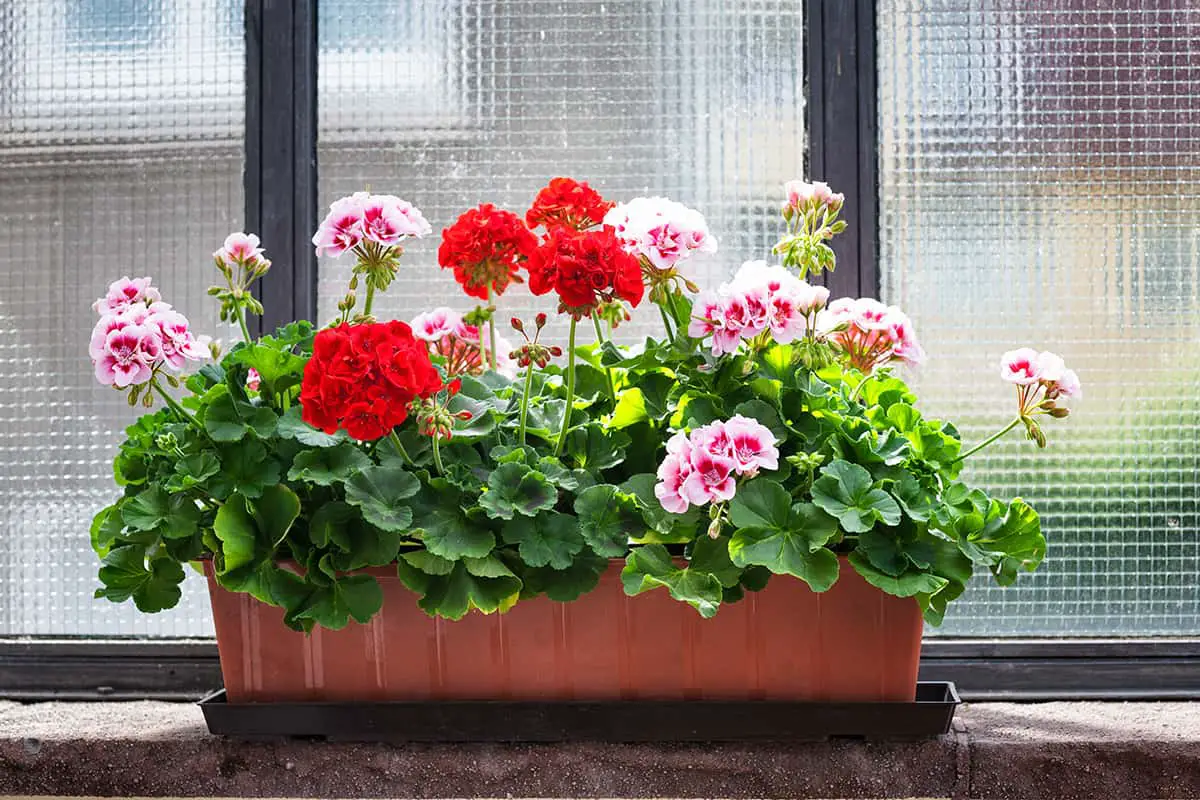You’ve just moved into an apartment with a small balcony and crave a splash of color to brighten the space. Geraniums, with their bright blooms and lush foliage, are perfect candidates for container gardening. Growing geraniums in pots allows you to enjoy their beauty up close, even in limited spaces. Here’s how to cultivate these vibrant flowers to turn your balcony into a blooming oasis.
Table of Contents
Pot & Container Selection
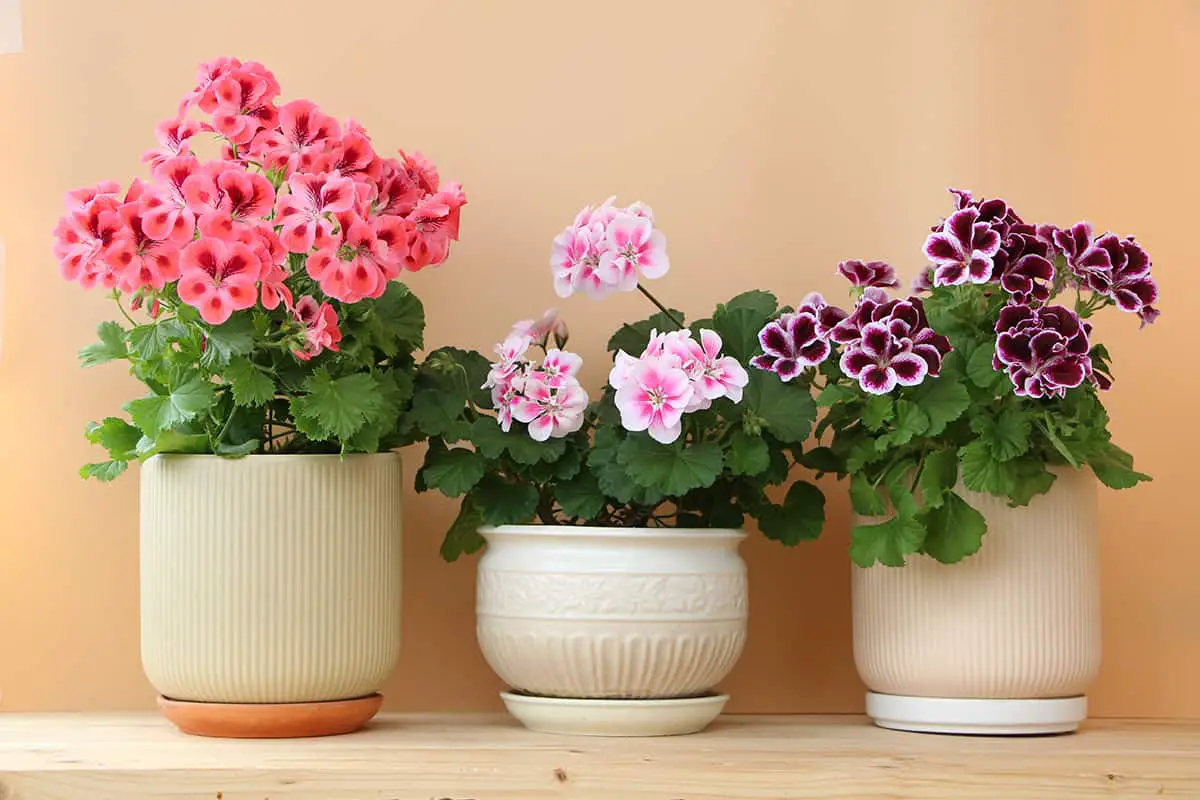
Growing geraniums in pots requires choosing the right pot to ensure they flourish. You’ll need to consider the pot material, size, and drainage to give your plants the best growing conditions.
Pot Material
The material of your pot can affect both the health of your geraniums and the ease of care. Clay or terra cotta pots are porous, allowing soil to dry more evenly which is beneficial for geraniums that do not like overly wet roots. Plastic and resin pots are lightweight and retain moisture longer, which can be helpful if you tend to forget watering. Yet, these require careful monitoring to prevent waterlogged soil which could harm plant health.
Pot Size
Your choice of pot size has a direct impact on the health of your geraniums. A pot that is too small will restrict root growth and require more frequent watering. Conversely, a pot that is too large can hold excessive moisture leading to root rot. A good rule of thumb is choosing a pot that is 8 to 12 inches in diameter, providing ample room for roots to grow without excess soil moisture.
Drainage Requirements
Proper drainage is essential for geraniums in containers. Ensure your pots have adequate drainage holes to allow excess water to escape. Without these, water may pool at the bottom of the pot, leading to root diseases and a weakened plant. If your chosen container lacks holes, consider drilling some yourself or opting for another pot to ensure the longevity of your geraniums.
Selecting the Right Geraniums
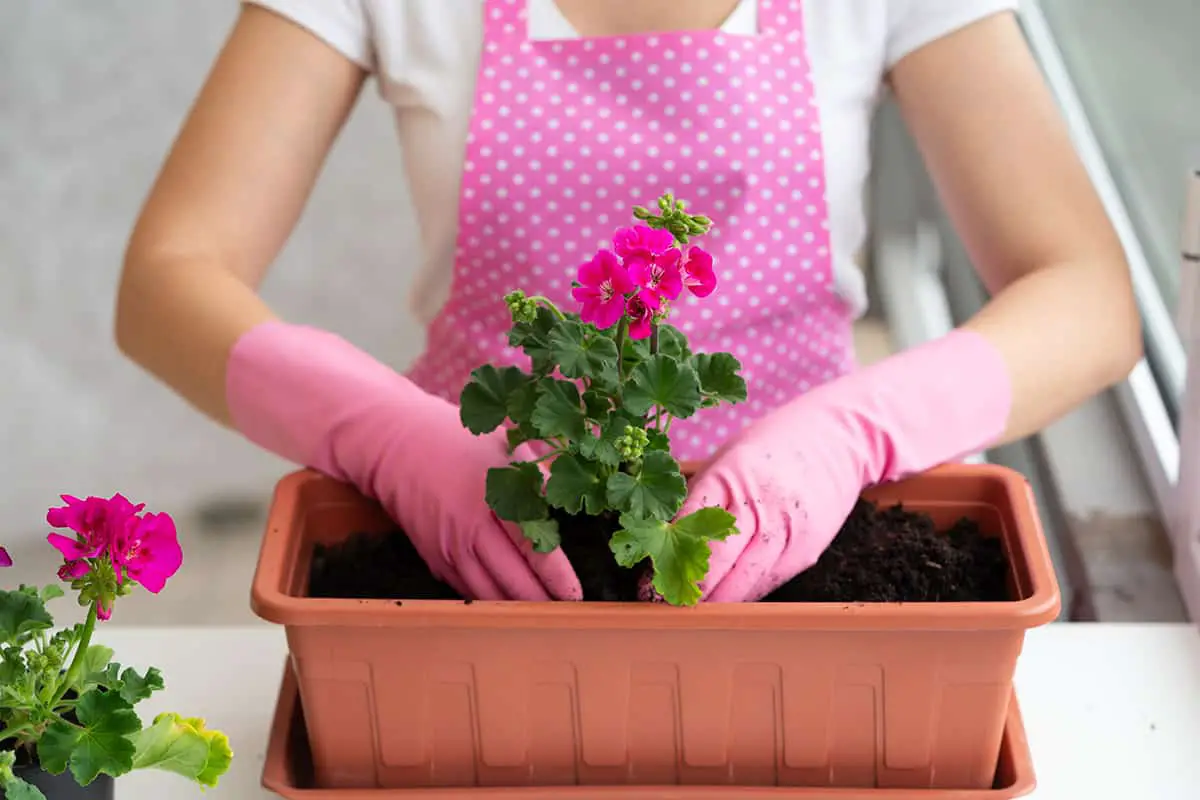
Choosing the right geraniums for your pots ensures a vibrant and healthy display. Important factors include the species or variety you select and the plant’s health before potting.
Species and Varieties
You can find geraniums in a wide array of colors and forms, suitable for both sun and shade. Common geraniums are often Pelargonium species, which offer brightly colored blooms. True geraniums, or wild geraniums, belong to the genus Geranium and are known for their hardiness. Select a variety that thrives in your climate and matches your aesthetic preferences.
Plant Health Considerations
Ensure that the geraniums you choose are free of pests and diseases. The foliage should be green without spots or yellowing. Strong, sturdy stems indicate a well-developed root system, crucial for successful growth in pots.
Soil and Potting Mix
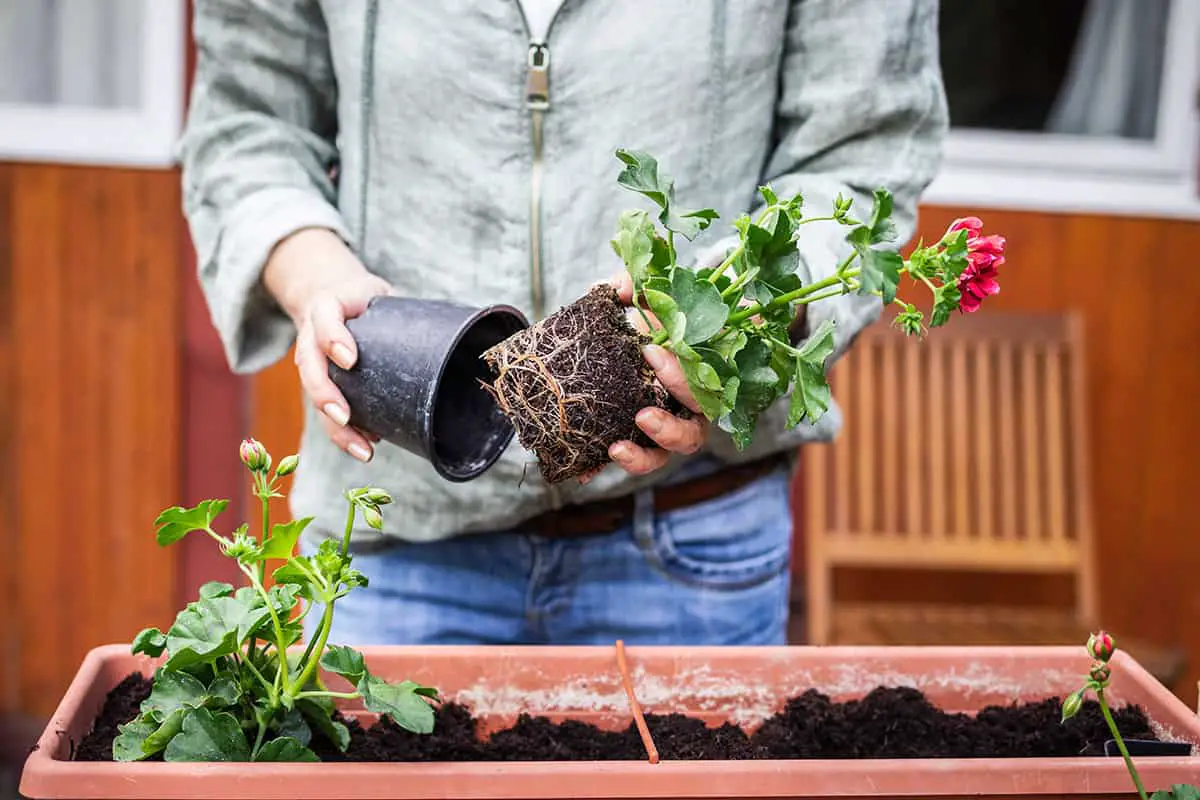
Soil Composition
Your geraniums need well-drained soil to thrive. Choose a potting mix that contains peat, pine bark, and perlite. This combination ensures that the soil stays light and airy, which helps prevent waterlogging, a common issue that can lead to root rot.
Nutrient Requirements
Geraniums are moderately heavy feeders, requiring a consistent supply of key nutrients. Incorporate a balanced, slow-release fertilizer into your potting mix. This ensures a steady supply of nitrogen, phosphorus, and potassium, which are essential for your geraniums’ growth and bloom production.
DIY Potting Mix Recipes
You can create a homemade potting mix for your geraniums. Combine two parts peat moss with one part perlite and one part compost. This mix will provide good drainage and enough organic material to support your plants. Add a slow-release fertilizer to this mix before planting to kick-start growth.
Planting Procedure
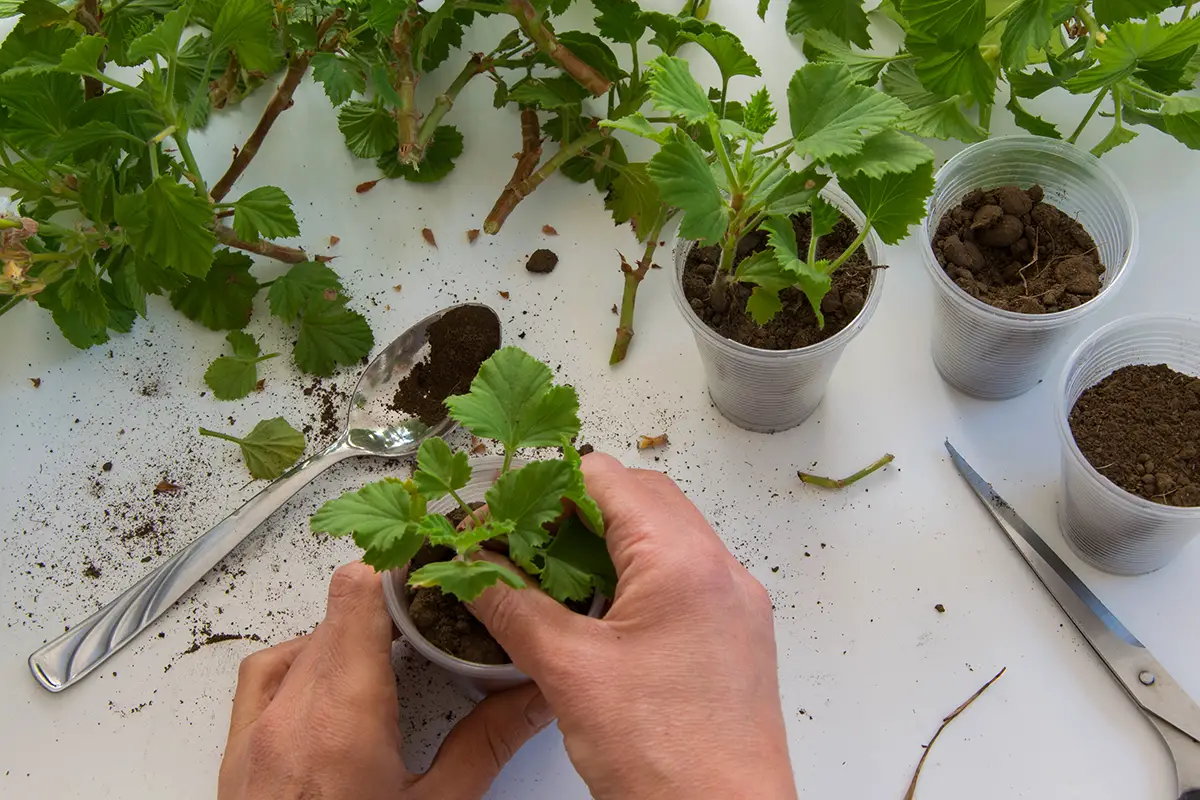
Growing geraniums in pots starts with two main methods: transplanting established young plants or seeding directly. Each approach requires specific steps to ensure the geraniums flourish.
Transplanting Young Geraniums
To transplant young geraniums, choose a pot with drainage holes to prevent waterlogging. Fill it with a well-draining potting mix. Make a hole in the center, big enough for the geranium’s root ball. Carefully remove the geranium from its current container, handling the root ball with care to avoid damage. Place the plant in the prepared hole and fill in around it with potting mix. Gently firm the soil and water the plant well.
Seeding Directly in Pots
If you are sowing geranium seeds directly into pots, select a pot with drainage and fill it with a quality potting mix suitable for geraniums. Sow the geranium seeds evenly on the soil surface. Sprinkle a thin layer of potting mix over the seeds to cover them lightly. Water the soil gently but thoroughly. Position the pot in a location that receives ample sunlight and maintains consistent moisture until germination occurs.
Watering and Feeding
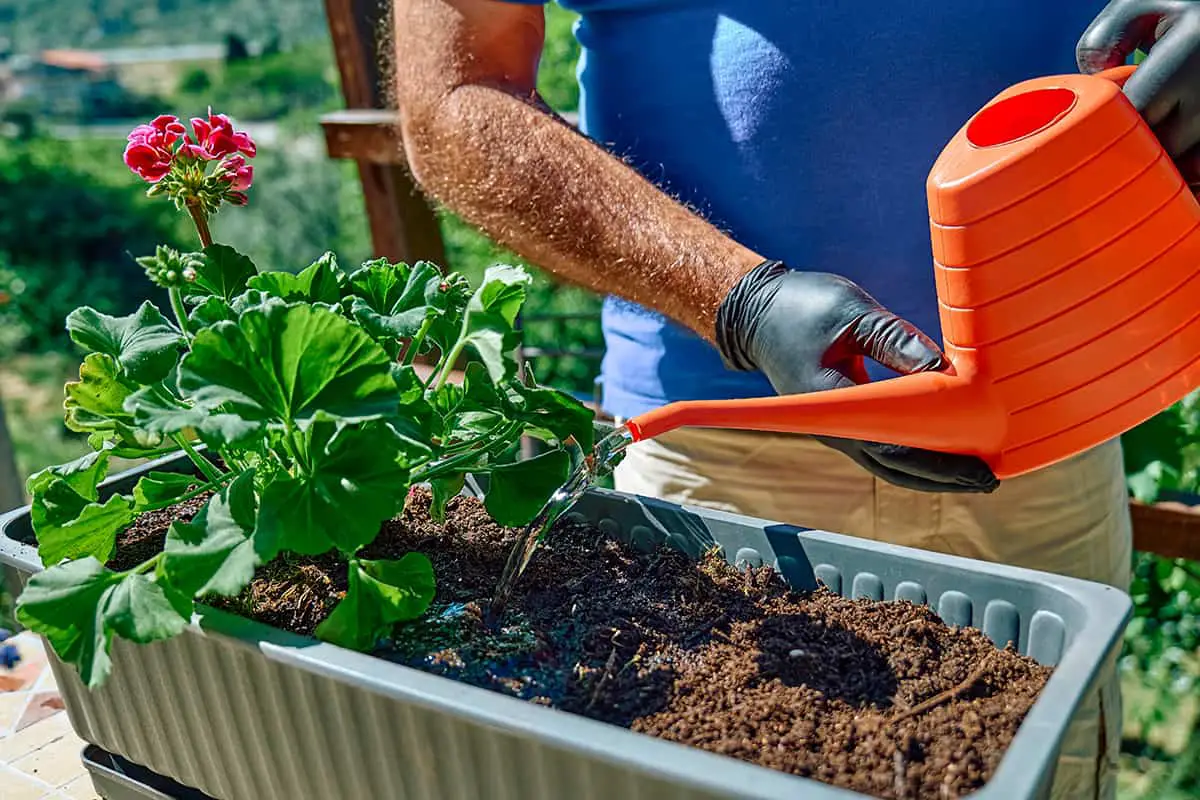
Watering Schedule
Check the soil for dryness several times a week; geraniums demand consistent moisture. Water your geraniums thoroughly when the top inch of soil feels dry. Aim for morning watering to keep foliage dry by evening. In hot, dry weather, potted geraniums may need water two to three times a week. Proper irrigation practices may prevent water-related stress and diseases.
Fertilizers and Supplements
Feed your geraniums every two weeks using a balanced fertilizer. A diluted solution of water-soluble fertilizer ensures a steady supply of nutrients. Overwintering or larger plants may benefit from a more robust feeding regimen. Avoid over-fertilizing, as it can cause more foliage but fewer flowers. Keep track of each feeding to maintain a routine that promotes blooming.
Sunlight and Temperature
To grow geraniums in pots, you need the right balance of sunlight and temperature.
Light Exposure
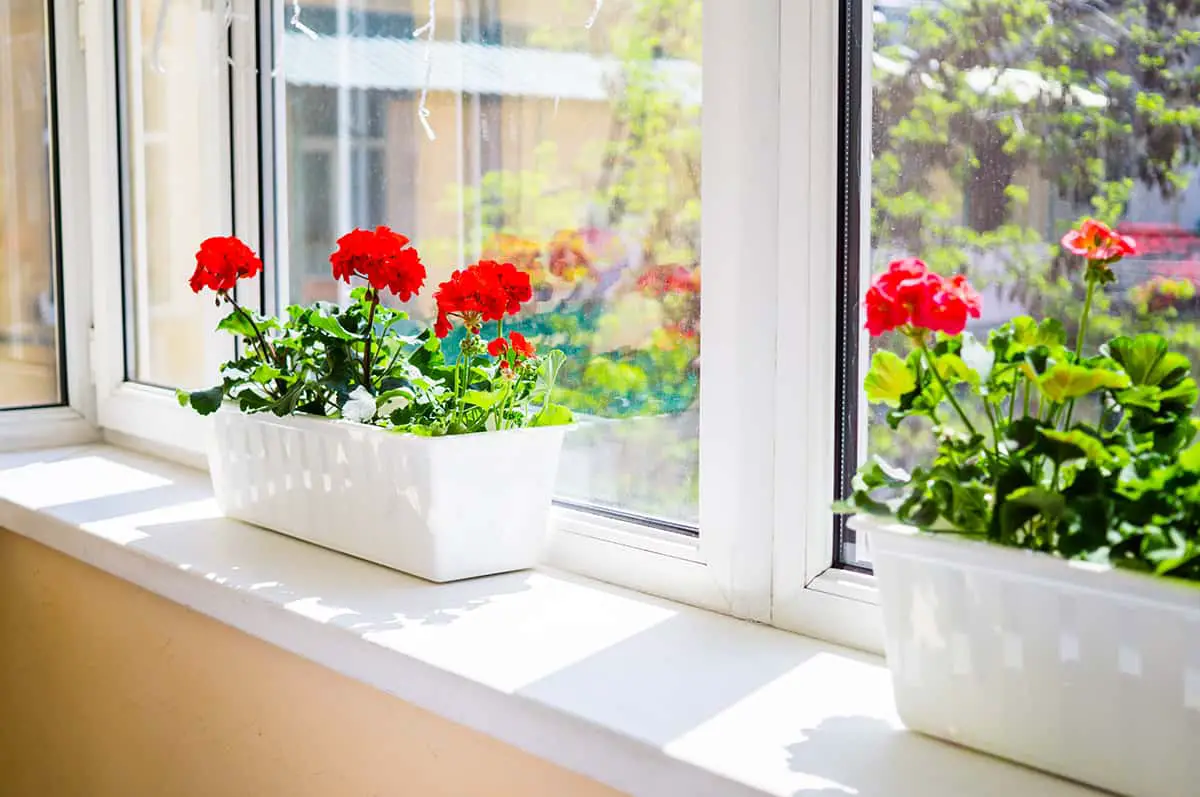
Geraniums require ample sunlight to thrive. Place your potted geraniums where they receive at least six hours of direct sunlight daily. Locations with morning sunlight are ideal, as the light is less intense. If you notice leaf discoloration or weak growth, this can indicate insufficient light.
Temperature Control
Geraniums grow best within a certain temperature range. Aim to maintain a daytime temperature around 70 to 75 degrees F and a nighttime temperature between 60 to 65 degrees F. Protect your geraniums from temperatures below 60 degrees F, as cooler temperatures can impede growth and delay flowering.
Pruning and Maintenance
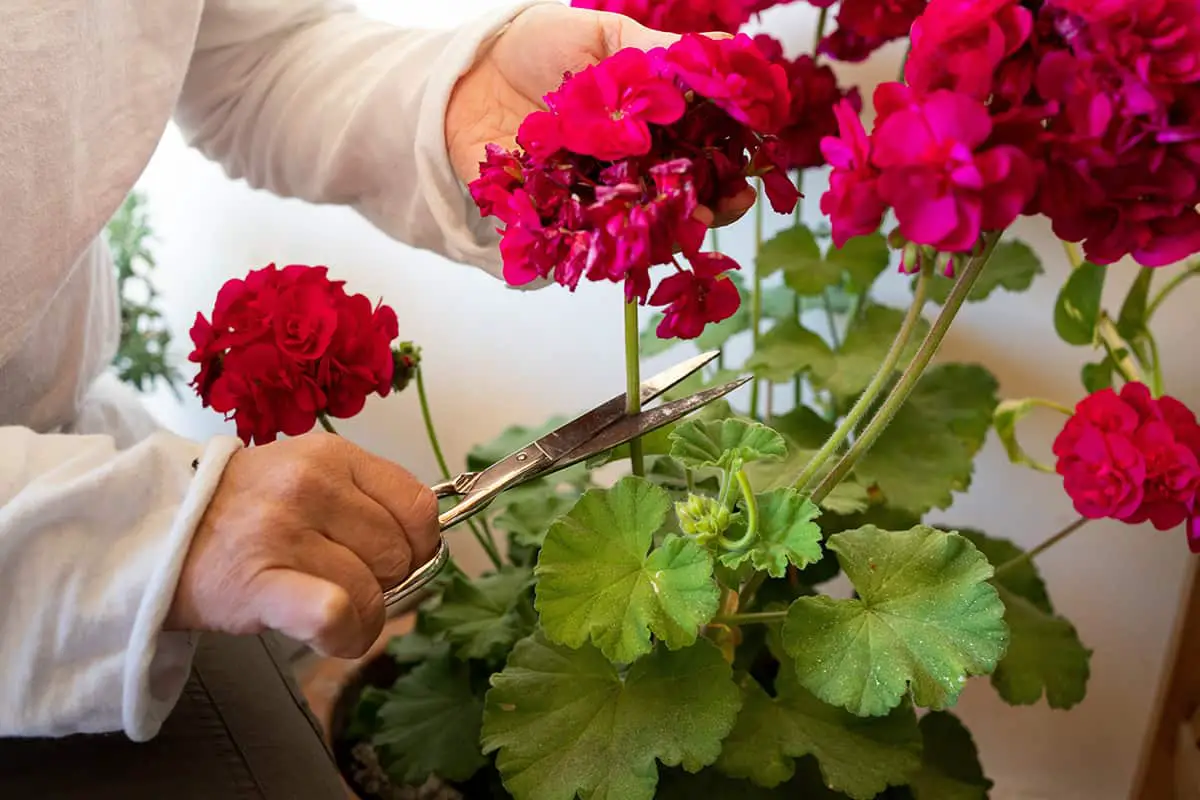
Regular Pruning
Regular pruning is essential. It stimulates new growth and promotes a bushy appearance. This involves removing dead leaves and stems. You should also prune overgrown geraniums periodically.
Deadheading Spent Blooms
Remove faded or dead flowers promptly. This process, known as deadheading, encourages more blooms. It diverts energy from seed production to new flower growth.
Winter Care
In winter, geraniums require extra attention. With reduced daylight hours and cooler temperatures, these plants need less water. Prune geraniums back by one-third of their size before bringing indoors, and provide them with bright light.
Pest and Disease Management
When growing geraniums in pots, you must manage pests and diseases effectively to ensure healthy plants.
Common Pests
Geraniums may attract several pests like aphids, whiteflies, and spider mites. Aphids suck sap from plants, weakening them. To control aphids, you can spray water to physically remove them or use insecticidal soap. Whiteflies, tiny white insects, feed on the underside of leaves. They cause yellowing and may transmit diseases. Hang sticky traps or use horticultural oil to combat them. Spider mites, which thrive in dry conditions, create fine webs and damage leaves. Increase humidity and apply miticides if necessary.
Disease Prevention
To prevent diseases in geraniums, start with disease-free plants and well-drained soil. Overwatering promotes fungal diseases. So, water sufficiently but allow the soil to dry between watering. Geraniums in crowded conditions are more prone to bacterial leaf spot. Space your pots to improve air circulation. If a plant becomes infected, remove it immediately to prevent the spread.
